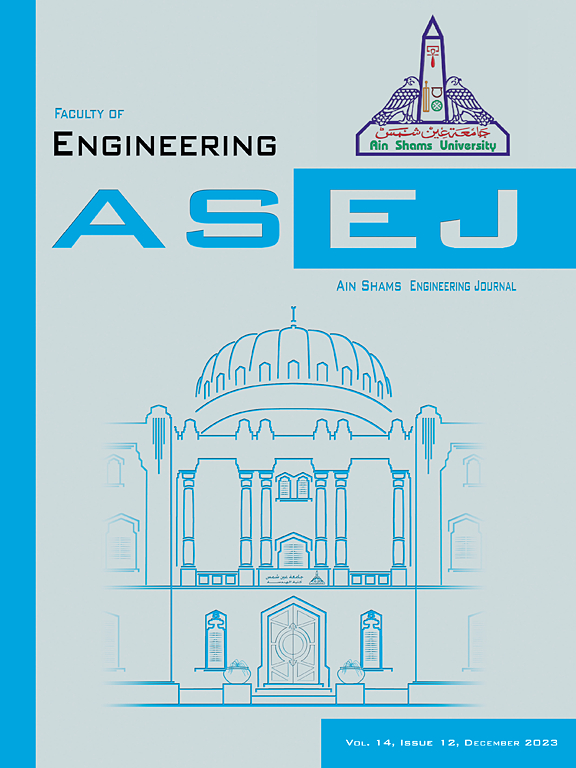Enhancing rotor angle stability of reconfigured transmission networks
IF 6
2区 工程技术
Q1 ENGINEERING, MULTIDISCIPLINARY
引用次数: 0
Abstract
Transmission network planners use switching to address a variety of issues, one of which is short circuit currents that exceed the capability of transmission substations. Transmission Switching (TS) can influence rotor angle transient stability (RATS). The alteration of the short-circuit power at points of interconnection of certain generators (POIs) due to switching can cause those generators to lose stability post-clearance of severe network faults. Therefore, it is imperative that RATS be taken into account when adopt switching in transmission networks. In the literature, analyses of generator angle separation only during and after fault incidence are used for predicting RATS issues. This can be quite challenging for network operators in terms of the available time for carrying out mitigating actions. Generation redispatch, among other measures, can be utilized to preserve RATS post-network switching. In previous work, the authors addressed the optimization of transmission network switching using steady state analysis as an inexpensive way to manage increased short circuit currents amid large-scale generation integration in some networks. This paper is the sequel of the previous work where the preservation of RATS amid such switching actions is addressed. An algorithm for preserving RATS after switching is proposed. The algorithm depends on the MATLAB regression learner that identifies the best heuristic technique for a solution with the least root mean square error (RMSE). PSS®E is utilized to run the simulations on a real-size practical extra-high voltage network. The results are then fed to the MATLAB regression learner, which identifies the relation between the impedance seen by each generator and the altered setpoints (e.g., generator dispatch). The algorithm therefore provides sufficient time for network operators to react to expected RATS issues since it anticipates these issues before fault events occur. Additionally, this algorithm enhances the industry-based software used for transient security assessment because it eliminates the need to run all the network contingencies every time if the relation between the impedance and the setpoints is kept within desirable values.
提高重构输电网转子角稳定性
输电网络规划者使用开关来解决各种问题,其中之一是短路电流超过输电变电站的能力。传输切换(TS)会影响转子角暂态稳定。在某些发电机的并网点上,由于开关引起的短路功率的改变,会使这些发电机在清除严重的网络故障后失去稳定性。因此,在传输网中采用交换时,必须考虑rat。在文献中,发电机角度分离分析仅在故障发生期间和之后用于预测RATS问题。这对于网络运营商来说是相当具有挑战性的,因为他们没有足够的时间来采取缓解措施。除其他措施外,可以利用代重调度来保持RATS的网后交换。在之前的工作中,作者利用稳态分析解决了传输网络交换的优化问题,作为一种廉价的方法来管理一些网络中大规模发电集成中增加的短路电流。本文是先前工作的续集,其中讨论了在这种切换动作中RATS的保存。提出了一种切换后保持rat的算法。该算法依赖于MATLAB回归学习器,该学习器识别具有最小均方根误差(RMSE)的解决方案的最佳启发式技术。PSS®E用于在实际尺寸的实用特高压网络上运行仿真。然后将结果馈送到MATLAB回归学习器,该学习器识别每个发电机看到的阻抗与改变的设定值(例如,发电机调度)之间的关系。因此,该算法为网络运营商提供了足够的时间来应对预期的RATS问题,因为它在故障事件发生之前就预测到了这些问题。此外,该算法增强了用于暂态安全评估的基于行业的软件,因为如果阻抗和设定值之间的关系保持在理想值内,则无需每次运行所有网络突发事件。
本文章由计算机程序翻译,如有差异,请以英文原文为准。
求助全文
约1分钟内获得全文
求助全文
来源期刊

Ain Shams Engineering Journal
Engineering-General Engineering
CiteScore
10.80
自引率
13.30%
发文量
441
审稿时长
49 weeks
期刊介绍:
in Shams Engineering Journal is an international journal devoted to publication of peer reviewed original high-quality research papers and review papers in both traditional topics and those of emerging science and technology. Areas of both theoretical and fundamental interest as well as those concerning industrial applications, emerging instrumental techniques and those which have some practical application to an aspect of human endeavor, such as the preservation of the environment, health, waste disposal are welcome. The overall focus is on original and rigorous scientific research results which have generic significance.
Ain Shams Engineering Journal focuses upon aspects of mechanical engineering, electrical engineering, civil engineering, chemical engineering, petroleum engineering, environmental engineering, architectural and urban planning engineering. Papers in which knowledge from other disciplines is integrated with engineering are especially welcome like nanotechnology, material sciences, and computational methods as well as applied basic sciences: engineering mathematics, physics and chemistry.
 求助内容:
求助内容: 应助结果提醒方式:
应助结果提醒方式:


